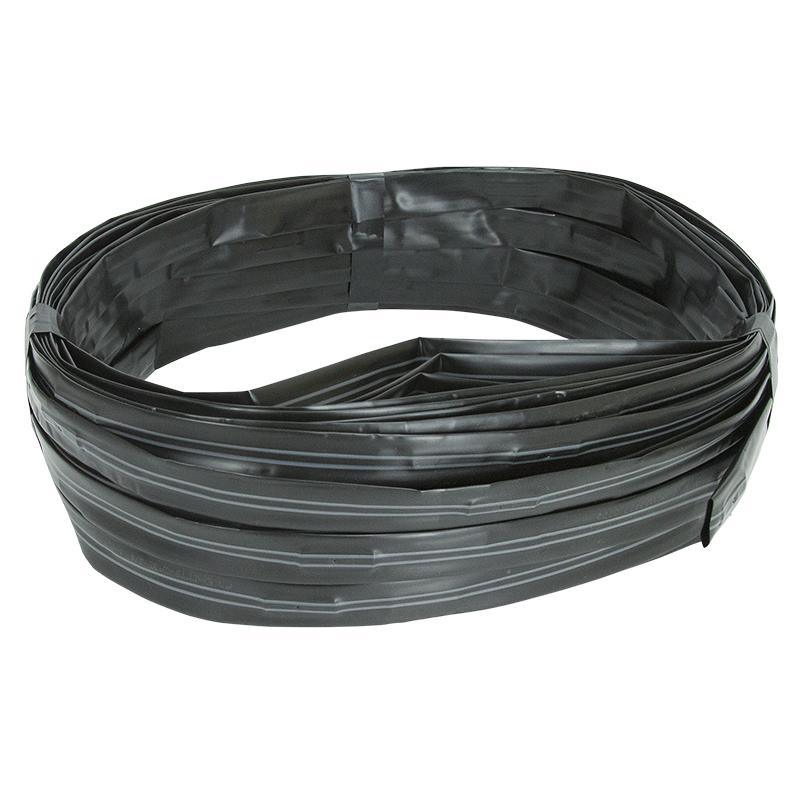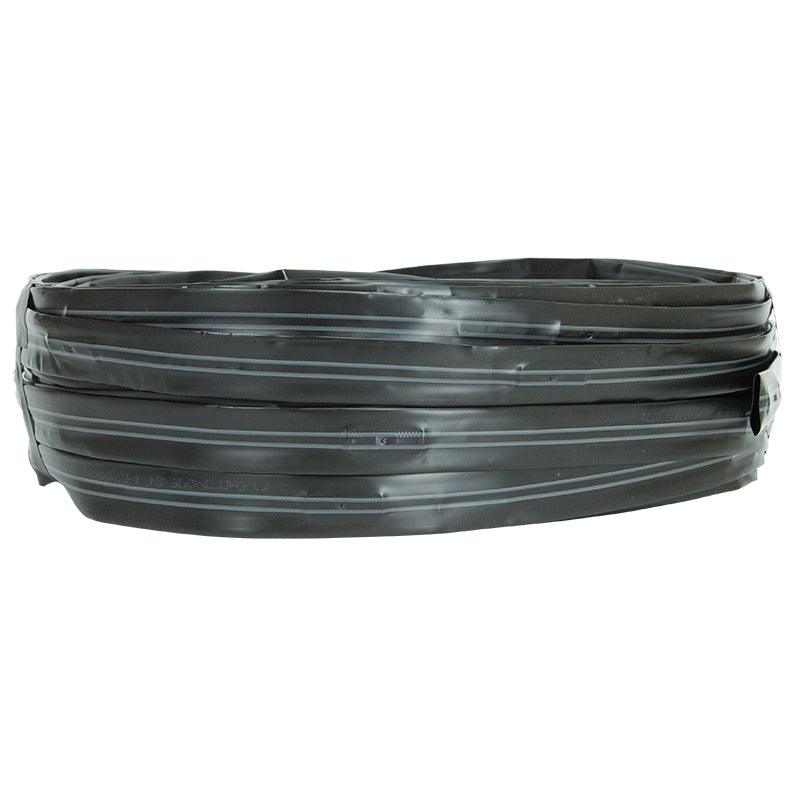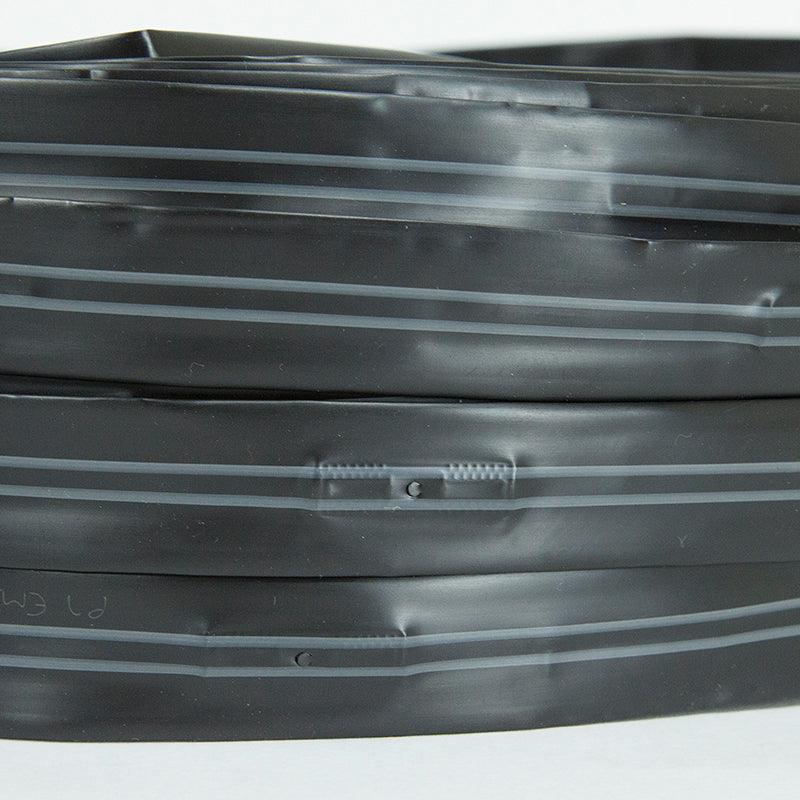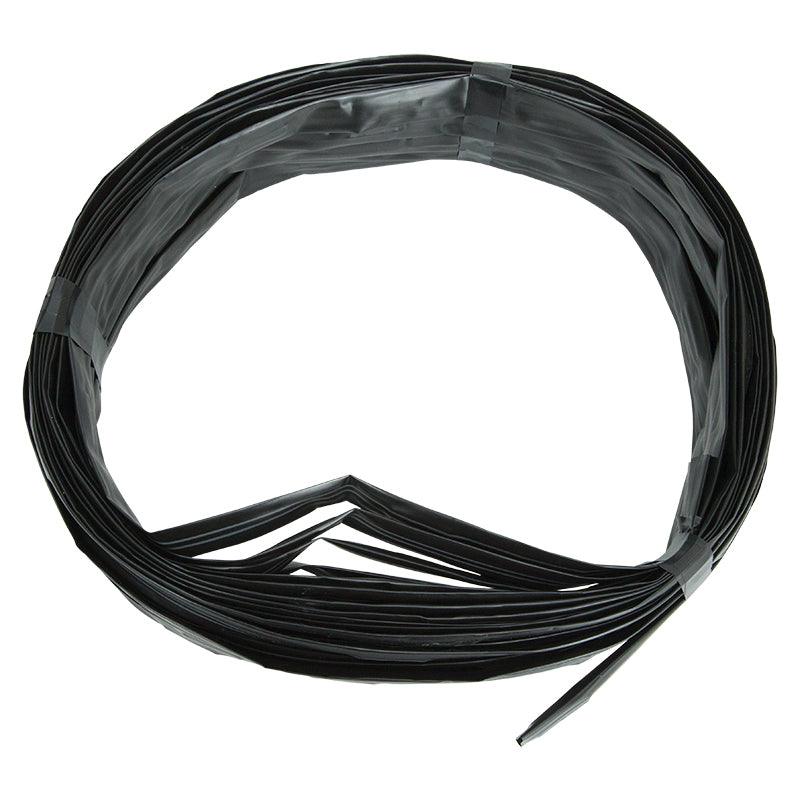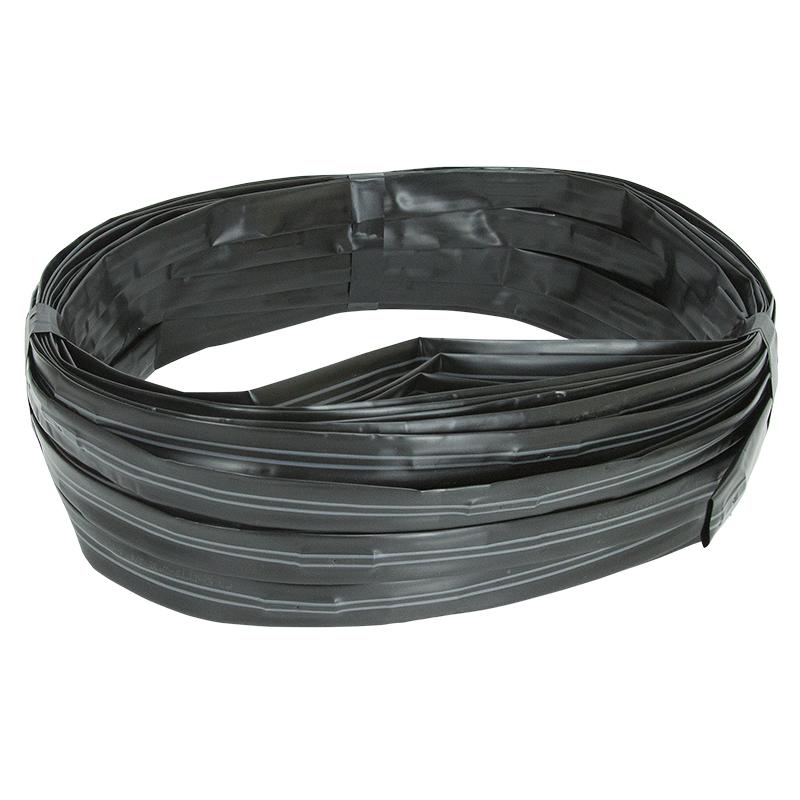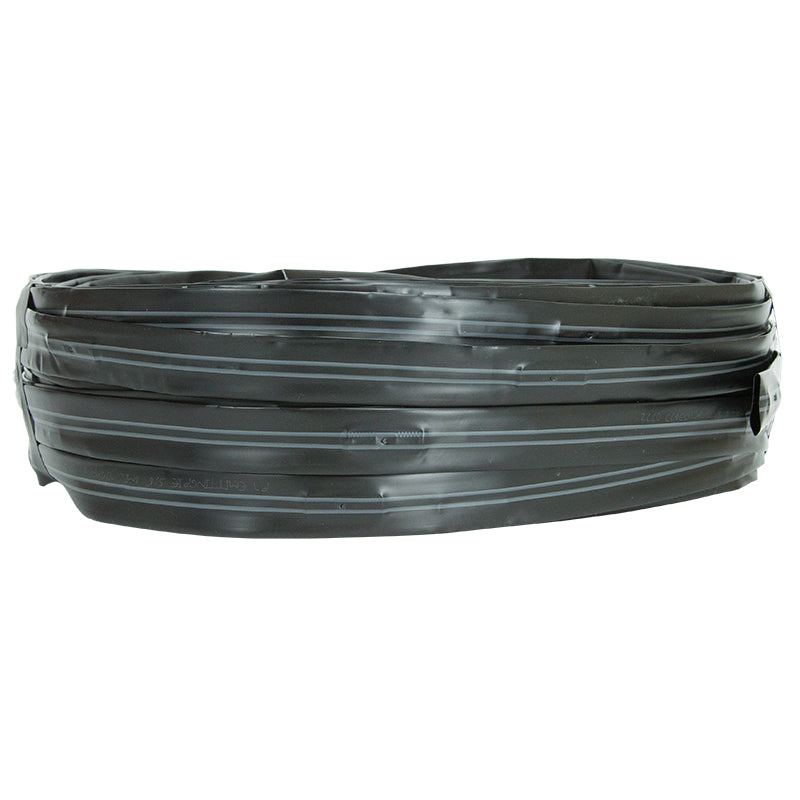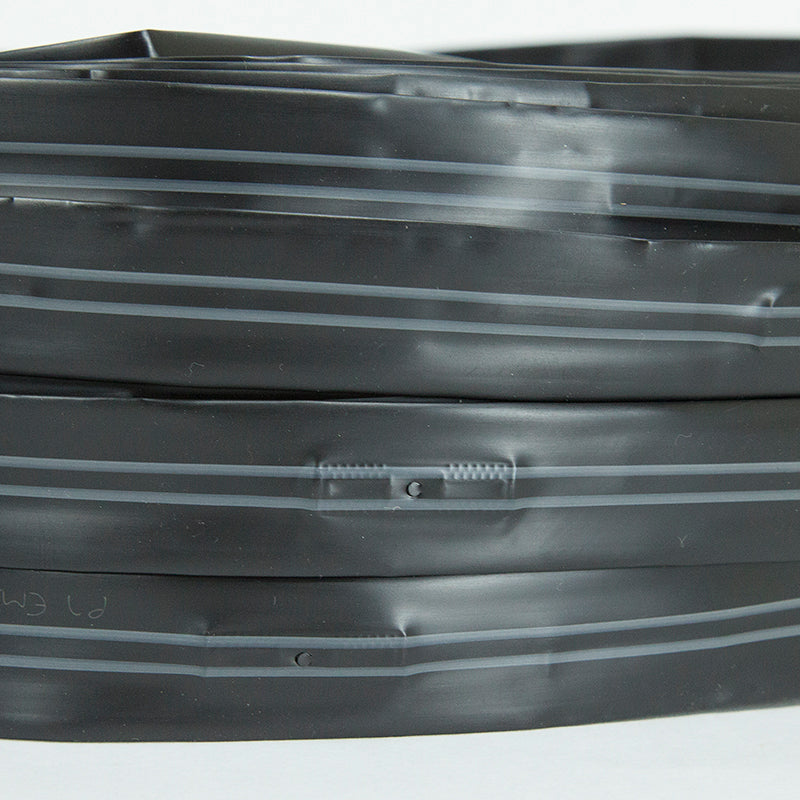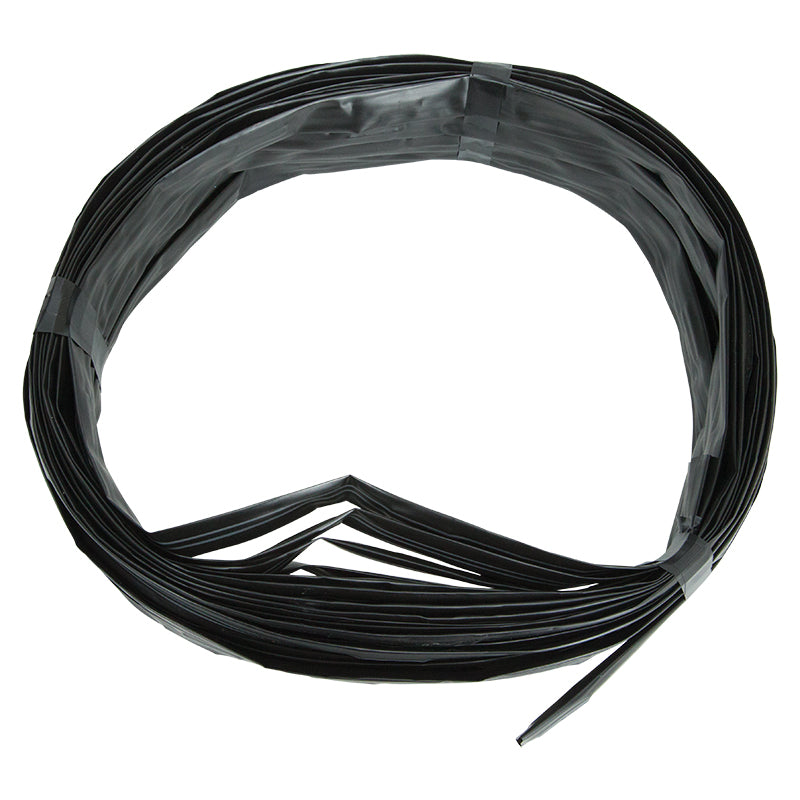Item Number: IRP460
P1 Discrete Emitter Drip Tape 8 Mil (100')
P1 Discrete Emitter Drip Tape 8 Mil (100')
Low Pressure Irrigation
Low Pressure Irrigation
Premium light dripperline product with innovative technologies that result in the following benefits to the grower:
Seamless construction is stronger and more durable.
P1 is manufactured using the highest quality engineering grade polyethylene resins available in the market today, producing a high strength and abrasion resistant product.
P1 is made with injection molded drippers. Molded drippers offer a high degree of plug resistance, lower coefficient of variation, resulting in highly uniform water distribution.
Outlet Flap is Standard. Outlet flap protects the emission device. Opens under pressure allowing flow and closes on shut down to reduce root intrusion and soil ingestion. With the flap you can feel confident installing P1 in above or below ground applications.
Integrated inlet filters add additional protection against clogging.
0.17 gph flow rate at 10 psi
Emitters spaced every 8 inches.
Discrete emitter drip tape, with an 8 mil thickness, is a versatile and efficient irrigation system used in agriculture and landscaping. Here's a comprehensive guide on how to effectively grow crops using discrete emitter drip tape:
Selection and Installation: Choose a high-quality discrete emitter drip tape suitable for your specific irrigation needs. Ensure the tape has evenly spaced emitters to deliver water directly to the root zone of plants. Install the drip tape along rows or beds, securing it with stakes or anchors to prevent movement. Proper installation is crucial for ensuring uniform water distribution and maximizing irrigation efficiency.
Spacing and Layout: Determine the spacing and layout of the drip tape based on the type of crops being grown and their water requirements. For row crops, place the drip tape along the center of the planting beds, ensuring even coverage of the root zone. For raised beds or container gardening, lay the drip tape in a zigzag pattern to cover the entire growing area. Adjust the spacing between tapes and emitters to meet the specific needs of your crops.
Water Source and Pressure: Connect the drip tape to a reliable water source, such as a well, reservoir, or municipal water supply. Ensure the water source is equipped with a filtration system to remove sediment and debris that can clog the emitters. Monitor water pressure to ensure it falls within the recommended range for the drip tape, typically between 10 and 25 psi. Install pressure regulators and filters as needed to maintain consistent water flow and prevent damage to the tape.
Operation and Maintenance: Regularly inspect the drip tape system for leaks, clogs, or damage that may affect performance. Flush the system periodically to remove debris and prevent emitter clogging. Monitor soil moisture levels and adjust irrigation schedules as needed based on weather conditions and crop requirements. Replace worn or damaged drip tape components promptly to prevent water waste and ensure optimal performance.
Fertilization and Nutrient Management: Incorporate fertilizers and soil amendments into the irrigation system to deliver nutrients directly to the root zone of plants. Use water-soluble fertilizers or injectors to ensure uniform distribution and efficient nutrient uptake. Monitor nutrient levels in the soil and adjust fertilization practices accordingly to maintain optimal plant health and productivity.
Weed and Pest Control: Implement weed control measures to prevent weed growth around the drip tape, which can interfere with water distribution and crop growth. Use mulches or landscape fabrics to suppress weeds and conserve soil moisture. Monitor for pests and diseases that may be attracted to the moist conditions created by the drip tape and implement appropriate control measures to minimize damage to crops.
Crop Rotation and Management: Practice crop rotation to maintain soil health and reduce the risk of disease and pest buildup. Rotate crops with different water and nutrient requirements to optimize resource use and minimize stress on the drip tape system. Implement good agronomic practices, such as proper spacing, pruning, and trellising, to maximize yields and quality.
Environmental Considerations: Consider environmental factors such as climate, soil type, and topography when designing and managing a drip tape irrigation system. Adjust irrigation schedules and practices based on local weather patterns and water availability to minimize water waste and environmental impact. Implement erosion control measures to prevent soil erosion and runoff from irrigation water.
Economic and Efficiency Benefits: Drip tape irrigation offers numerous economic and efficiency benefits compared to traditional overhead or furrow irrigation methods. By delivering water directly to the root zone of plants, drip tape reduces water waste and evaporation, leading to significant water savings. Additionally, drip tape can improve crop yields, quality, and uniformity while reducing labor and energy costs associated with irrigation.
This emitter drip tape with an 8 mil thickness is a highly effective irrigation system for growing crops in a wide range of agricultural and landscaping applications. By following these guidelines for selection, installation, operation, and maintenance, growers can maximize the efficiency and productivity of their drip tape systems while minimizing water waste and environmental impact.

Check Your Zone Compatibility:
Compatible with your zone.
Growing Zone for
,

Our Guarantee To You
Since 1976, we've served our customers at every stage of growing. Please contact us at any time. We are happy to support and assist you.
Description
Description
Low Pressure Irrigation
Premium light dripperline product with innovative technologies that result in the following benefits to the grower:
Seamless construction is stronger and more durable.
P1 is manufactured using the highest quality engineering grade polyethylene resins available in the market today, producing a high strength and abrasion resistant product.
P1 is made with injection molded drippers. Molded drippers offer a high degree of plug resistance, lower coefficient of variation, resulting in highly uniform water distribution.
Outlet Flap is Standard. Outlet flap protects the emission device. Opens under pressure allowing flow and closes on shut down to reduce root intrusion and soil ingestion. With the flap you can feel confident installing P1 in above or below ground applications.
Integrated inlet filters add additional protection against clogging.
0.17 gph flow rate at 10 psi
Emitters spaced every 8 inches.
Discrete emitter drip tape, with an 8 mil thickness, is a versatile and efficient irrigation system used in agriculture and landscaping. Here's a comprehensive guide on how to effectively grow crops using discrete emitter drip tape:
Selection and Installation: Choose a high-quality discrete emitter drip tape suitable for your specific irrigation needs. Ensure the tape has evenly spaced emitters to deliver water directly to the root zone of plants. Install the drip tape along rows or beds, securing it with stakes or anchors to prevent movement. Proper installation is crucial for ensuring uniform water distribution and maximizing irrigation efficiency.
Spacing and Layout: Determine the spacing and layout of the drip tape based on the type of crops being grown and their water requirements. For row crops, place the drip tape along the center of the planting beds, ensuring even coverage of the root zone. For raised beds or container gardening, lay the drip tape in a zigzag pattern to cover the entire growing area. Adjust the spacing between tapes and emitters to meet the specific needs of your crops.
Water Source and Pressure: Connect the drip tape to a reliable water source, such as a well, reservoir, or municipal water supply. Ensure the water source is equipped with a filtration system to remove sediment and debris that can clog the emitters. Monitor water pressure to ensure it falls within the recommended range for the drip tape, typically between 10 and 25 psi. Install pressure regulators and filters as needed to maintain consistent water flow and prevent damage to the tape.
Operation and Maintenance: Regularly inspect the drip tape system for leaks, clogs, or damage that may affect performance. Flush the system periodically to remove debris and prevent emitter clogging. Monitor soil moisture levels and adjust irrigation schedules as needed based on weather conditions and crop requirements. Replace worn or damaged drip tape components promptly to prevent water waste and ensure optimal performance.
Fertilization and Nutrient Management: Incorporate fertilizers and soil amendments into the irrigation system to deliver nutrients directly to the root zone of plants. Use water-soluble fertilizers or injectors to ensure uniform distribution and efficient nutrient uptake. Monitor nutrient levels in the soil and adjust fertilization practices accordingly to maintain optimal plant health and productivity.
Weed and Pest Control: Implement weed control measures to prevent weed growth around the drip tape, which can interfere with water distribution and crop growth. Use mulches or landscape fabrics to suppress weeds and conserve soil moisture. Monitor for pests and diseases that may be attracted to the moist conditions created by the drip tape and implement appropriate control measures to minimize damage to crops.
Crop Rotation and Management: Practice crop rotation to maintain soil health and reduce the risk of disease and pest buildup. Rotate crops with different water and nutrient requirements to optimize resource use and minimize stress on the drip tape system. Implement good agronomic practices, such as proper spacing, pruning, and trellising, to maximize yields and quality.
Environmental Considerations: Consider environmental factors such as climate, soil type, and topography when designing and managing a drip tape irrigation system. Adjust irrigation schedules and practices based on local weather patterns and water availability to minimize water waste and environmental impact. Implement erosion control measures to prevent soil erosion and runoff from irrigation water.
Economic and Efficiency Benefits: Drip tape irrigation offers numerous economic and efficiency benefits compared to traditional overhead or furrow irrigation methods. By delivering water directly to the root zone of plants, drip tape reduces water waste and evaporation, leading to significant water savings. Additionally, drip tape can improve crop yields, quality, and uniformity while reducing labor and energy costs associated with irrigation.
This emitter drip tape with an 8 mil thickness is a highly effective irrigation system for growing crops in a wide range of agricultural and landscaping applications. By following these guidelines for selection, installation, operation, and maintenance, growers can maximize the efficiency and productivity of their drip tape systems while minimizing water waste and environmental impact.
Shipping Information
Shipping Information
Shipping Weight: 1.0 lb
Dimensions: 14.0"L x 12.5"W x 3.0"H
Features
Features
Characteristics
Characteristics
Use Instructions
Use Instructions
Useful Information
Useful Information
Guarantee
Guarantee
Share
